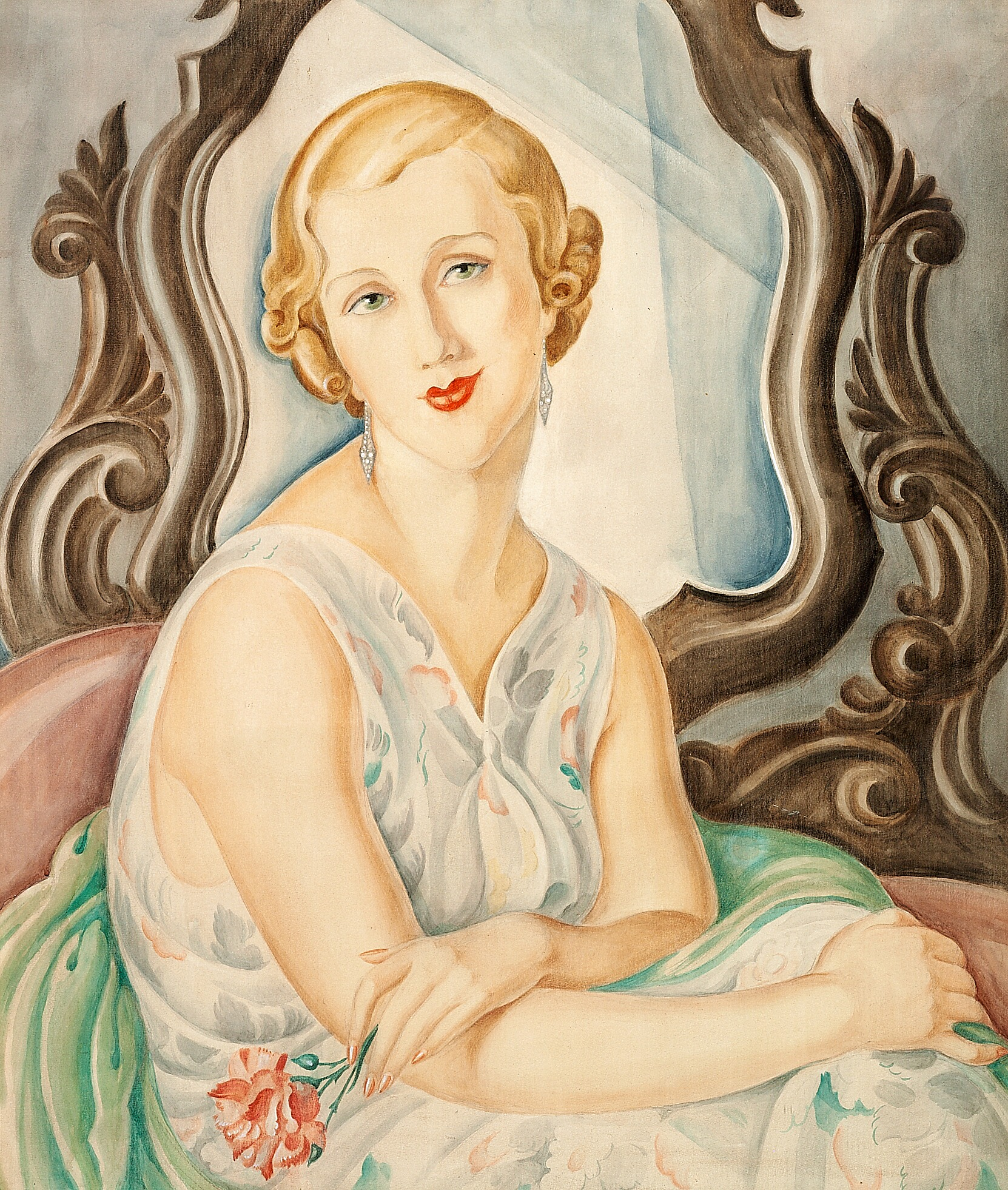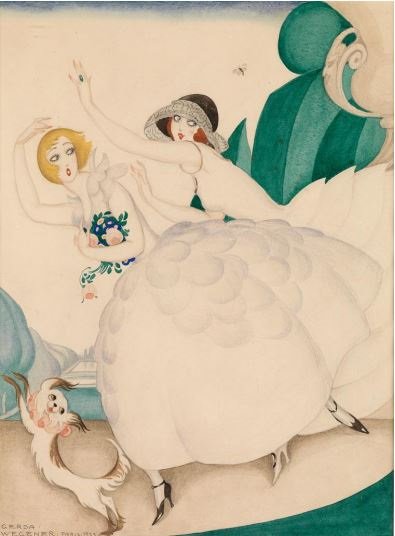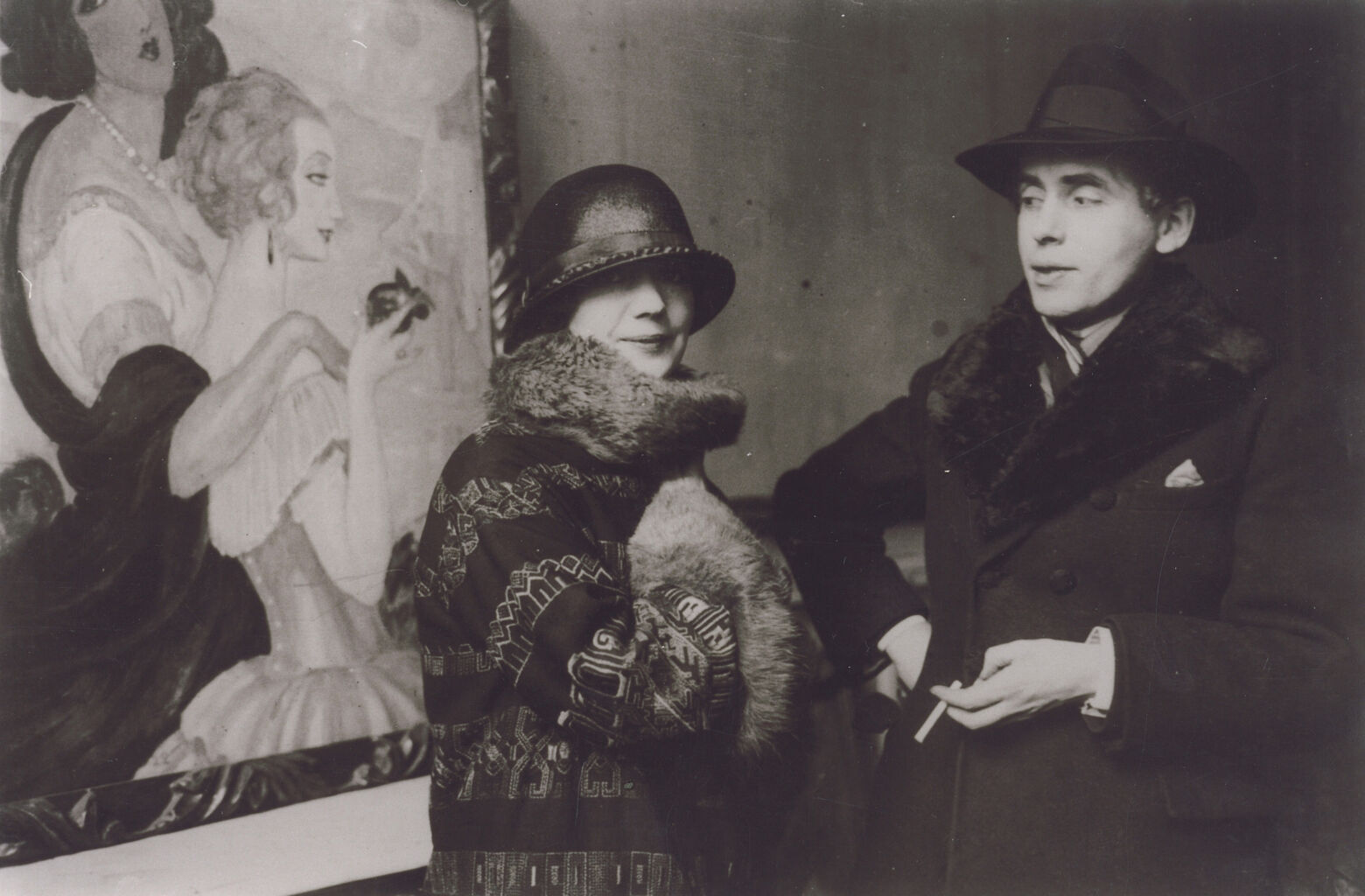Although little known today, the artist Gerda Wegener, with a keen eye for fashion and the beauty of the feminine form, was well suited for the Roaring Twenties with its changing roles and hemlines for women. She created paintings, drawings, cartoons, illustrations, and advertisements that celebrated the new century’s New Woman: independent, sensuous and, and self-assured. A selection of some eighty of her paintings, drawings, and illustrations are on view as part of the exhibition Fashioning Desire: The Art of Gerda Wegener in Coe Hall now through June 26, 2022.

Born Gerda Gottlieb in 1885 in a small town in South Denmark, the pastor’s daughter approached the world with an open mind and ambitions greater than what was expected of a village girl at the end of the nineteenth century. Having demonstrated an artistic talent early, by the age of 17 Gerda left home and enrolled at the Royal Danish Academy of Fine Arts in Copenhagen. There she met Lili Elbe (then known as male artist Einar Wegener), a fellow painter whose free spirit and unconventional approach to life matched her own. The two married in 1904, and, finding Copenhagen society too artistically and socially restrictive, moved in 1912 to Paris, a site of freedom for creative women like Wegener and Elbe. The couple quickly integrated into the vibrant cultural scene, and Wegener began to achieve great artistic success as a portraitist and illustrator for fashion and satirical magazines.

Often using herself and Elbe as her models—as in the watercolor above, Flee the Bee, 1923—Wegener depicted elongated, elegant figures in a variety of media, from oil on canvas to pen and ink drawings to satirical cartoons in the printed press. She peopled her pictorial world with fashion-conscious Parisiennes. Her use of a sensual, sensitive, and witty female gaze to portray contemporary people engaging in various activities of daily life along with her embrace of art and popular culture place Wegener as an innovative figure in the history of modernism, a history critical to the story of Planting Fields. Her striking work, viewed alongside the art of her American contemporaries Robert Winthrop Chanler and Everett Shinn, modern artists central to the history of Planting Fields, contextualizes they dynamic cultural moment in which W.R. and Mai Coe lived and built their innovative, integrated country estate.
Top image: Gerda Wegener and Lili Elbe in front of Wegener’s painting Sur la route d’Anacapri at an exhibition in 1924.
Middle image: Gerda Wegener, Lady in Front of a Mirror, 1920s, watercolor on paper. The Shin Collection, New York.
Bottom image: Gerda Wegener, Flee the Bee, 1923, watercolor, gouache, and pencil on paper. The Shin Collection, New York.
Meredith A. Brown, Director of Museum Affairs and Chief Curator

